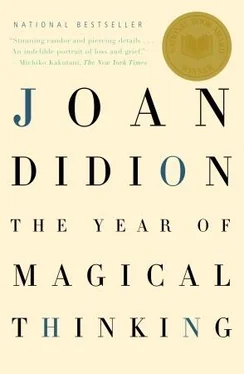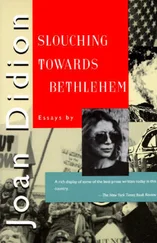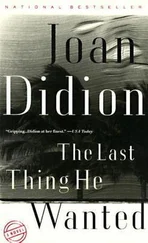There were, I also learned from this literature, two kinds of grief. The preferred kind, the one associated with “growth” and “development,” was “uncomplicated grief,” or “normal bereavement.” Such uncomplicated grief, according to The Merck Manual, 16th Edition, could still typically present with “anxiety symptoms such as initial insomnia, restlessness, and autonomic nervous system hyperactivity,” but did “not generally cause clinical depression, except in those persons inclined to mood disorder.” The second kind of grief was “complicated grief,” which was also known in the literature as “pathological bereavement” and was said to occur in a variety of situations. One situation in which pathological bereavement could occur, I read repeatedly, was that in which the survivor and the deceased had been unusually dependent on one another. “Was the bereaved actually very dependent upon the deceased person for pleasure, support, or esteem?” This was one of the diagnostic criteria suggested by David Peretz, M.D., of the Department of Psychiatry at Columbia University. “Did the bereaved feel helpless without the lost person when enforced separations occurred?”
I considered these questions.
Once in 1968 when I needed unexpectedly to spend the night in San Francisco (I was doing a piece, it was raining, the rain pushed a late-afternoon interview into the next morning), John flew up from Los Angeles so that we could have dinner together. We had dinner at Ernie’s. After dinner John took the PSA “Midnight Flyer,” a thirteen-dollar amenity of an era in California when it was possible to fly from Los Angeles to San Francisco or Sacramento or San Jose for twenty-six dollars round-trip, back to LAX.
I thought about PSA.
All PSA planes had smiles painted on their noses. The flight attendants were dressed in the style of Rudy Gernreich in hot-pink-and-orange miniskirts. PSA represented a time in our life when most things we did seemed without consequence, no-hands, a mood in which no one thought twice about flying seven hundred miles for dinner. This mood ended in 1978, when a PSA Boeing 727 collided with a Cessna 172 over San Diego, killing one hundred and forty-four.
It occurred to me when this happened that I had overlooked the odds when it came to PSA.
I see now that this error was not confined to PSA.
When Quintana at age two or three flew PSA to Sacramento to see my mother and father she referred to it as “going on the smile.” John used to write down the things she said on scraps of paper and put them in a black painted box his mother had given him. This box, which remains with its scraps of paper on a desk in my living room, was painted with an American eagle and the words “E Pluribus Unum.” Later he used some of the things she said in a novel, Dutch Shea, Jr. He gave them to Dutch Shea’s daughter, Cat, who had been killed by an IRA bomb while having dinner with her mother in a restaurant on Charlotte Street in London. This is part of what he wrote:
“Where you was?” she would say, and “Where did the morning went?” He wrote them all down and crammed them into the tiny secret drawer in the maple desk Barry Stukin had given him and Lee as a wedding present…. Cat in her school tartan. Cat who could call her bath a “bathment” and the butterflies for a kindergarten experiment “flybutters.” Cat who had made up her first poem at the age of seven: “I’m going to marry / A boy named Harry / He rides horses / And handles divorces.”
The Broken Man was in that drawer. The Broken Man was what Cat called fear and death and the unknown. I had a bad dream about the Broken Man, she would say. Don’t let the Broken Man catch me. If the Broken Man comes, I’ll hang onto the fence and won’t let him take me…. He wondered if the Broken Man had time to frighten Cat before she died.
I see now what I had failed to see in 1982, the year Dutch Shea, Jr. was published: this was a novel about grief. The literature would have said that Dutch Shea was undergoing pathological bereavement. The diagnostic signs would have been these: He is obsessed with the moment Cat died. He plays and replays the scene, as if rerunning it could reveal a different ending: the restaurant on Charlotte Street, the endive salad, Cat’s lavender espadrilles, the bomb, Cat’s head in the dessert trolley. He tortures his ex-wife, Cat’s mother, with a single repeated question: why was she in the ladies’ room when the bomb went off? Finally she tells him:
You never gave me much credit for being Cat’s mother, but I did raise her. I took care of her the day she got her period the first time and I remember when she was a little girl she called my bedroom her sweet second room and she called spaghetti buzzghetti and she called people who came to the house hellos. She said where you was and where did the morning went and you told Thayer, you son of a bitch, you wanted someone to remember her. So she told me she was pregnant, it was an accident, and she wanted to know what to do and I went into the ladies’ room because I knew I was going to cry and I didn’t want to cry in front of her and I wanted to get the tears out of the way so I could act sensibly and then I heard the bomb and when I finally got out part of her was in the sherbet and part of her was in the street and you, you son of a bitch, you want someone to remember her.
I believe John would have said that Dutch Shea, Jr. was about faith.
When he began the novel he already knew what the last words would be, not only the last words of the novel but the last words thought by Dutch Shea before he shoots himself: “I believe in Cat. I believe in God.” Credo in Deum. The first words of the Catholic catechism.
Was it about faith or was it about grief?
Were faith and grief the same thing?
Were we unusually dependent on one another the summer we swam and watched Tenko and went to dinner at Morton’s?
Or were we unusually lucky?
If I were alone could he come back to me on the smile?
Would he say get a table at Ernie’s?
PSA and the smile no longer exist, sold to US Airways and then painted off the planes.
Ernie’s no longer exists, but was briefly re-created by Alfred Hitchcock, for Vertigo. James Stewart first sees Kim Novak at Ernie’s. Later she falls from the bell tower (also re-created, an effect) at Mission San Juan Bautista.
We were married at San Juan Bautista.
On a January afternoon when the blossoms were showing in the orchards off 101.
When there were still orchards off 101.
No. The way you got sideswiped was by going back. The blossoms showing in the orchards off 101 was the incorrect track.
For several weeks after it happened I tried to keep myself on the correct track (the narrow track, the track on which there was no going back) by repeating to myself the last two lines of “Rose Aylmer,” Walter Savage Landor’s 1806 elegy to the memory of a daughter of Lord Aylmer’s who had died at age twenty in Calcutta. I had not thought of “Rose Aylmer” since I was an undergraduate at Berkeley, but now I could remember not only the poem but much of what had been said about it in whichever class I had heard it analyzed. “Rose Aylmer” worked, whoever was teaching this class had said, because the overblown and therefore meaningless praise for the deceased in the first four lines (“Ah, what avails the sceptred race! / Ah, what the form divine! / What every virtue, every grace! / Rose Aylmer, all were thine”) gets brought into sudden, even shocking relief by “the hard sweet wisdom” of the last two lines, which suggest that mourning has its place but also its limits: “A night of memories and sighs / I consecrate to thee.”
Читать дальше
Конец ознакомительного отрывка
Купить книгу












